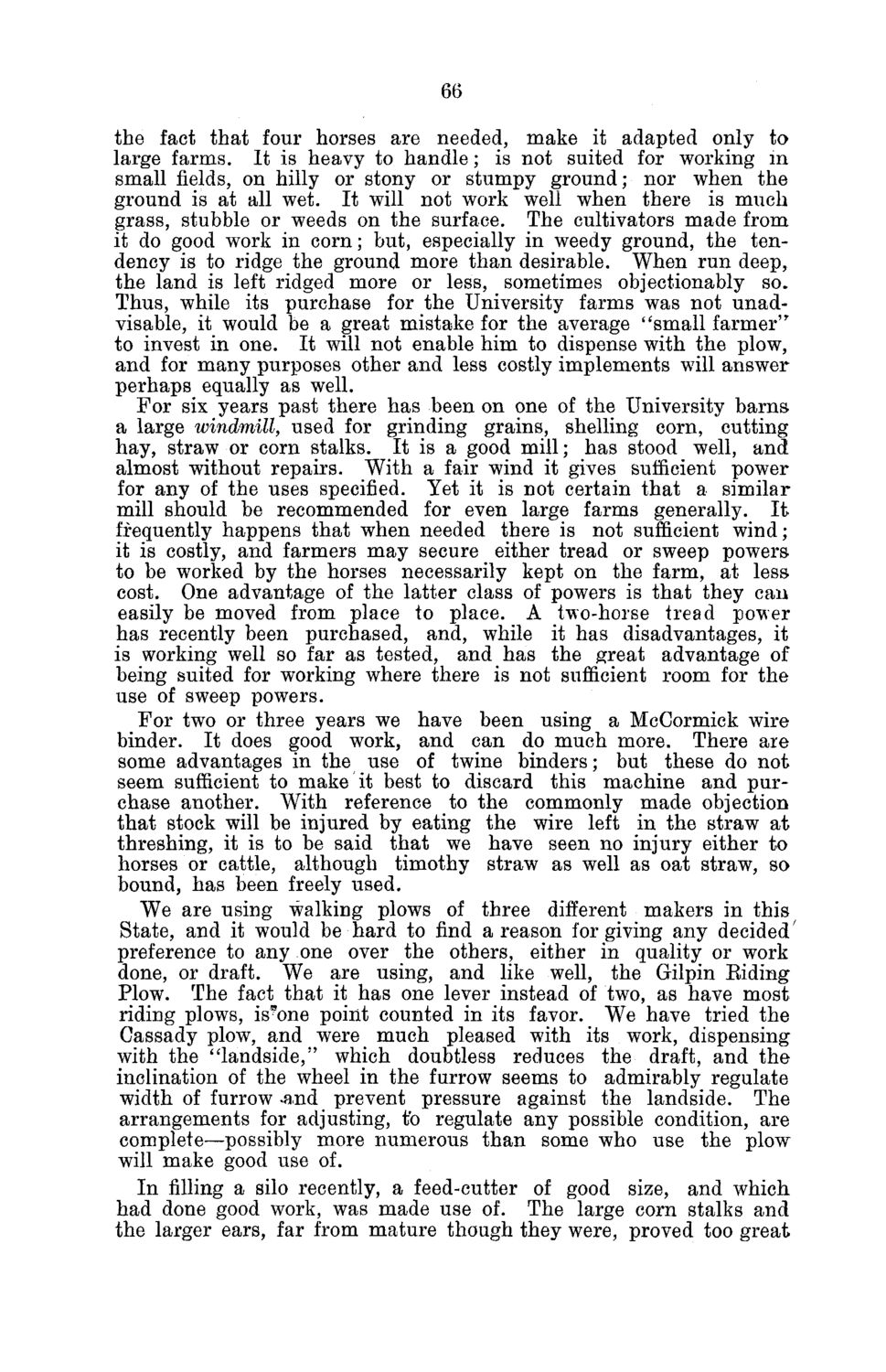| |
| |
Caption: Board of Trustees Minutes - 1882
This is a reduced-resolution page image for fast online browsing.

EXTRACTED TEXT FROM PAGE:
66 the fact that four horses are needed, make it adapted only to large farms. It is heavy to handle; is not suited for working in small fields, on hilly or stony or stumpy ground; nor when the ground is at all wet. It will not work well when there is much grass, stubble or weeds on the surface. The cultivators made from it do good work in corn; but, especially in weedy ground, the tendency is to ridge the ground more than desirable. When run deep, the land is left ridged more or less, sometimes objectionably so. Thus, while its purchase for the University farms was not unadvisable, it would be a great mistake for the average ' 'small farmer"" to invest in one. It will not enable him to dispense with the plow, and for many purposes other and less costly implements will answer perhaps equally as well. For six years past there has been on one of the University barns a large windmill, used for grinding grains, shelling corn, cutting hay, straw or corn stalks. It is a good mill; has stood well, and almost without repairs. With a fair wind it gives sufficient power for any of the uses specified. Yet it is not certain that a similar mill should be recommended for even large farms generally. I t frequently happens that when needed there is not sufficient wind; it is costly, and farmers may secure either tread or sweep powers to be worked by the horses necessarily kept on the farm, at less cost. One advantage of the latter class of powers is that they can easily be moved from place to place. A two-horse tread power has recently been purchased, and, while it has disadvantages, it is working well so far as tested, and has the great advantage of being suited for working where there is not sufficient room for the use of sweep powers. For two or three years we have been using a McCormick wire binder. It does good work, and can do much more. There are some advantages in the use of twine binders; but these do not seem sufficient to make it best to discard this machine and purchase another. With reference to the commonly made objection that stock will be injured by eating the wire left in the straw at threshing, it is to be said that we have seen no injury either to horses or cattle, although timothy straw as well as oat straw, so bound, has been freely used. We are using walking plows of three different makers in this State, and it would be hard to find a reason forgiving any decided preference to any one over the others, either in quality or work done, or draft. We are using, and like well, the Gilpin Eiding Plow. The fact that it has one lever instead of two, as have most riding plows, isfone point counted in its favor. We have tried the Cassady plow, and were much pleased with its work, dispensing with the "landside," which doubtless reduces the draft, and the inclination of the wheel in the furrow seems to admirably regulate width of furrow «and prevent pressure against the landside. The arrangements for adjusting, to regulate any possible condition, are complete—possibly more numerous than some who use the plow will make good use of. In filling a silo recently, a feed-cutter of good size, and which had done good work, was made use of. The large corn stalks and the larger ears, far from mature though they were, proved too great
| |